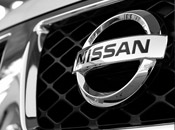Lower Your 1995 Nissan Maxima Insurance Cost
Perplexed by the wide range of insurance coverage company choices? You’re not alone. There are so many companies to choose from that it can easily become a ton of work to find the best price.
How to Compare Insurance Costs
All the larger insurance companies such as State Farm and Allstate quote price estimates on their websites. Getting quotes is quite easy as you simply type in the coverage amounts you desire as requested by the quote form. Once you submit the form, their rating system pulls your driving and credit reports and returns pricing information.
Online quotes makes comparing rates easy, but the time required to go to each company’s website and repetitively complete many quote forms can get tiresome after awhile. But it is imperative to get many rate quotes in order to get lower prices.
The better way to compare rates
The easiest way to compare rates makes use of a single form to obtain quotes from a bunch of companies at once. It’s a real time-saver, requires less work, and makes price shopping online much simpler. After your information is entered, it gets priced with multiple companies and you can pick any of the pricing results. If the quotes result in lower rates, you can simply submit the application and buy the policy. It just takes a couple of minutes and may save quite a bit of money.
To find out if lower rates are available, click here to open in a new tab and begin entering your coverage information. If you have your current policy handy, we recommend you copy the coverage information exactly as shown on your declarations page. Using the same limits helps guarantee you are getting comparison quotes for similar insurance coverage.
Tailor your coverage to you
When choosing proper insurance coverage for your vehicles, there is no “best” method to buy coverage. Your needs are not the same as everyone else’s.
These are some specific questions might point out whether your personal situation may require specific advice.
- Should I sign the liability waiver when renting a car?
- Am I missing any policy discounts?
- How can I find cheaper teen driver insurance?
- Will I lose any money if I cancel my policy before it expires?
- Do I need special endorsements for business use of my vehicle?
- Will my insurance pay for OEM parts?
- Does medical payments coverage apply to all occupants?
- Am I covered when driving someone else’s vehicle?
- Why do I only qualify for high-risk insurance?
If it’s difficult to answer those questions but you know they apply to you then you might want to talk to an agent. If you want to speak to an agent in your area, complete this form.
Auto insurance coverage breakdown
Understanding the coverages of your policy can be of help when determining the right coverages for your vehicles. The coverage terms in a policy can be confusing and nobody wants to actually read their policy.
Uninsured/Underinsured Motorist (UM/UIM) – This protects you and your vehicle from other motorists when they either are underinsured or have no liability coverage at all. Covered claims include medical payments for you and your occupants as well as your vehicle’s damage.
Since a lot of drivers have only the minimum liability required by law, their limits can quickly be used up. So UM/UIM coverage is a good idea.
Auto liability insurance – This coverage will cover damage or injury you incur to a person or their property that is your fault. This insurance protects YOU against other people’s claims, and doesn’t cover your own vehicle damage or injuries.
Coverage consists of three different limits, bodily injury for each person injured, bodily injury for the entire accident and a property damage limit. You might see values of 25/50/25 which stand for $25,000 in coverage for each person’s injuries, a total of $50,000 of bodily injury coverage per accident, and $25,000 of coverage for damaged propery.
Liability can pay for claims like structural damage, funeral expenses, medical expenses and pain and suffering. How much coverage you buy is a personal decision, but buy as high a limit as you can afford.
Collision coverage – This coverage covers damage to your Maxima from colliding with an object or car. You first must pay a deductible then the remaining damage will be paid by your insurance company.
Collision can pay for things like sustaining damage from a pot hole, crashing into a ditch, crashing into a building, hitting a mailbox and driving through your garage door. Collision is rather expensive coverage, so consider removing coverage from vehicles that are 8 years or older. It’s also possible to choose a higher deductible to save money on collision insurance.
Med pay and Personal Injury Protection (PIP) – Personal Injury Protection (PIP) and medical payments coverage reimburse you for short-term medical expenses like EMT expenses, funeral costs, dental work and chiropractic care. They are used to cover expenses not covered by your health insurance program or if you are not covered by health insurance. They cover you and your occupants and will also cover being hit by a car walking across the street. Personal injury protection coverage is not available in all states but it provides additional coverages not offered by medical payments coverage
Comprehensive insurance – Comprehensive insurance pays for damage that is not covered by collision coverage. You first must pay your deductible then your comprehensive coverage will pay.
Comprehensive insurance covers things like a tree branch falling on your vehicle, damage from a tornado or hurricane, falling objects, rock chips in glass and hail damage. The maximum amount your auto insurance company will pay is the market value of your vehicle, so if it’s not worth much more than your deductible consider removing comprehensive coverage.

